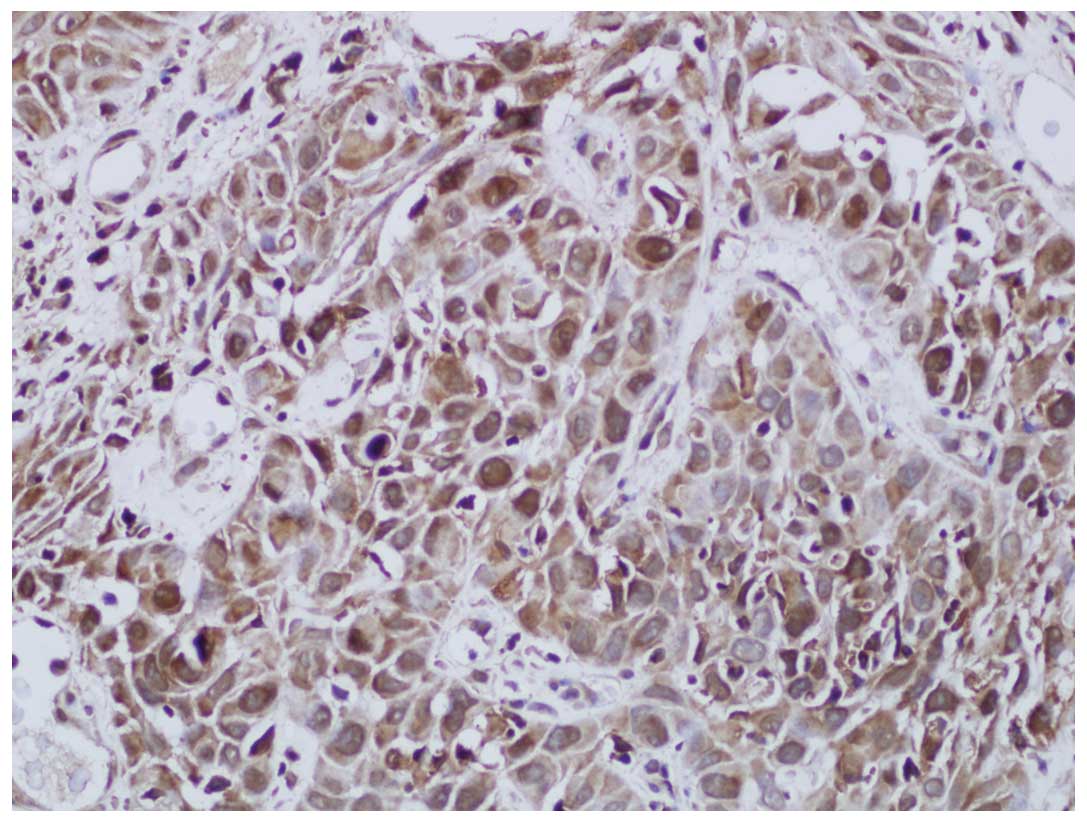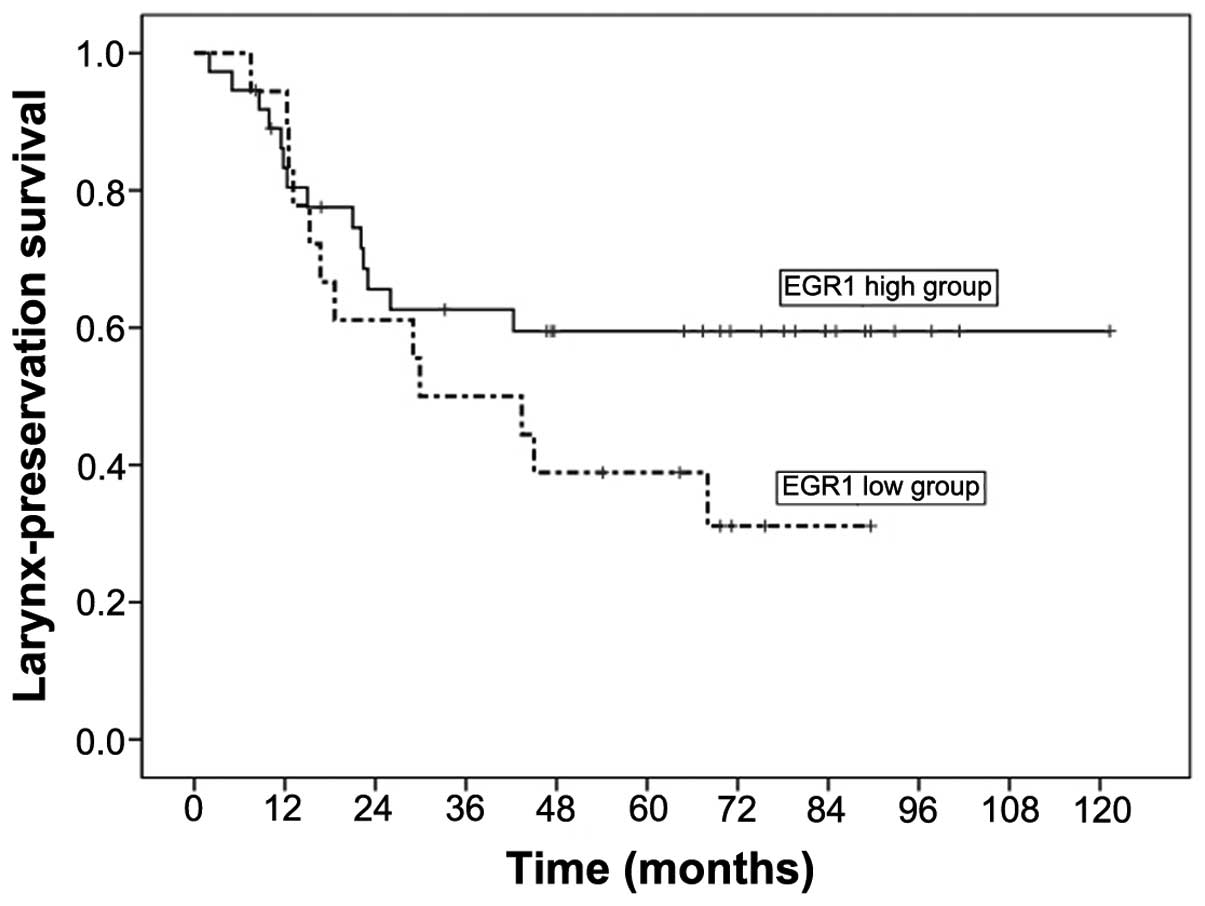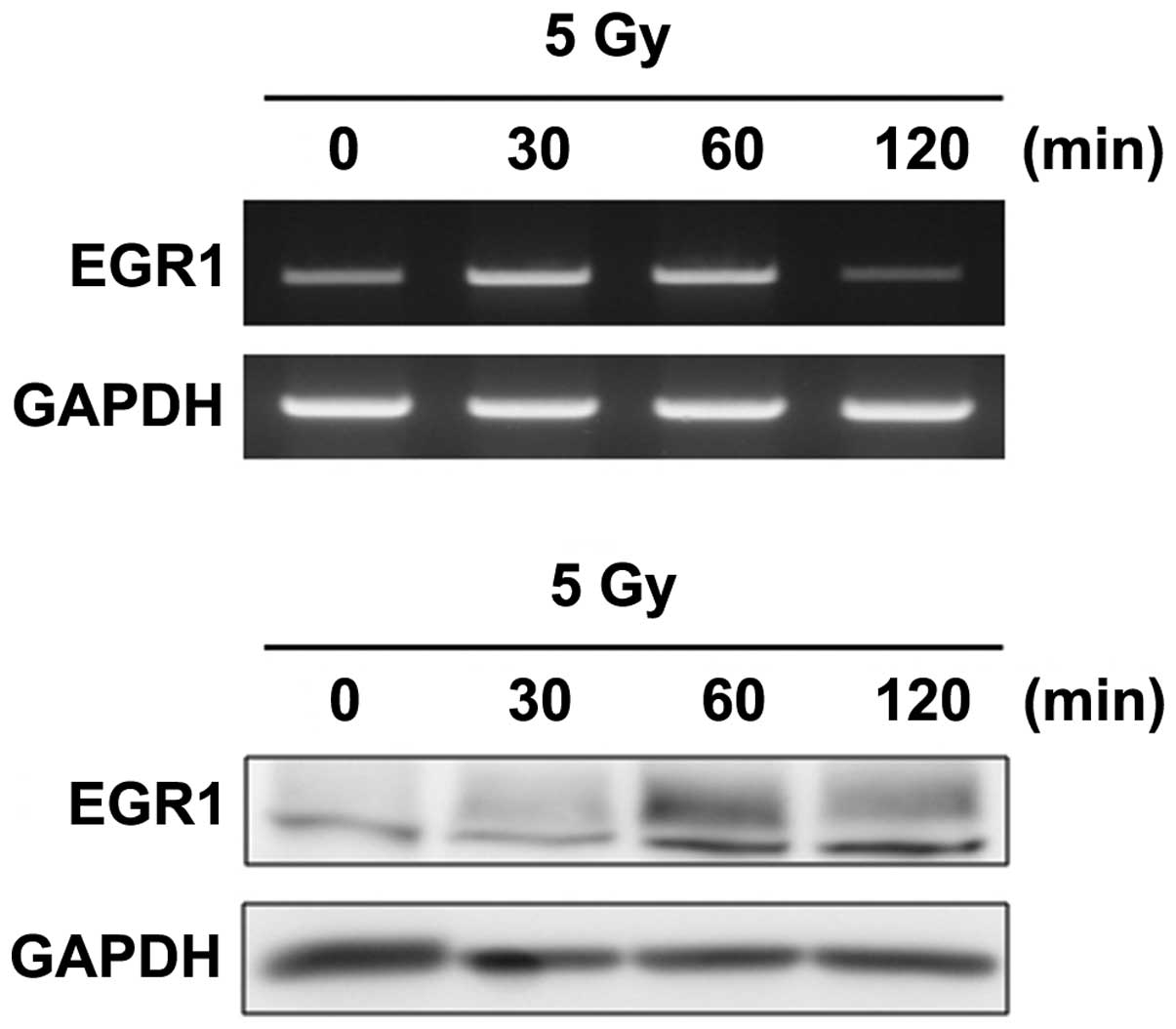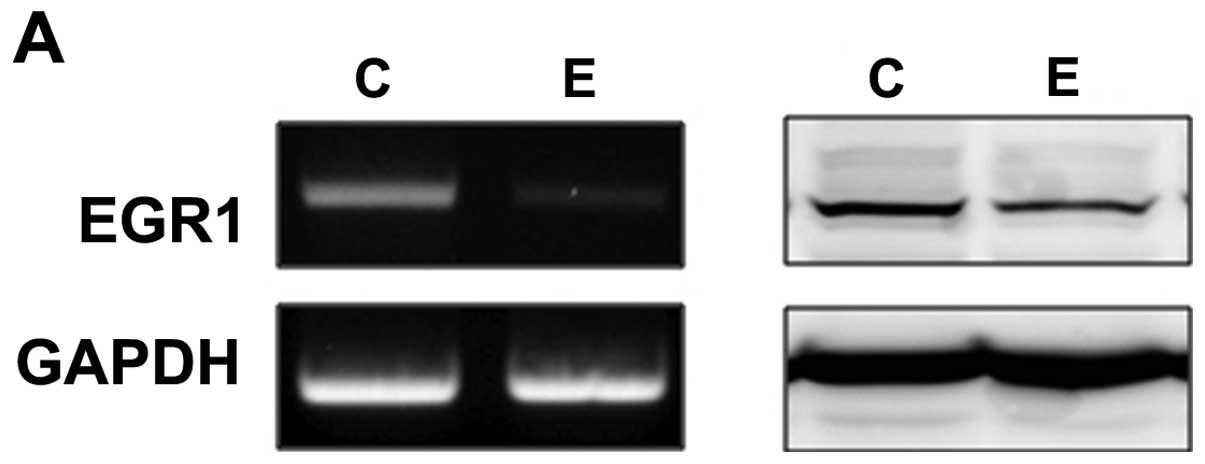EGR1 regulates radiation-induced apoptosis in head and neck squamous cell carcinoma
- Authors:
- Published online on: January 22, 2015 https://doi.org/10.3892/or.2015.3747
- Pages: 1717-1722
Metrics: Total
Views: 0 (Spandidos Publications: | PMC Statistics: )
Total PDF Downloads: 0 (Spandidos Publications: | PMC Statistics: )
Abstract
The transcription factor, early growth response 1 (EGR1) belongs to the early growth response family. EGR1 regulates the transactivation of genes involved in growth inhibition and apoptosis by ionizing radiation. The aims of the present study were to evaluate the expression of EGR1, and its relationship to prognosis, in patients with advanced laryngeal and hypopharyngeal squamous cell carcinoma (LHSCC) receiving chemoradiation therapy, and to observe the effect of EGR1 on the apoptosis of head and neck squamous cell carcinoma (HNSCC) cells treated with ionizing radiation. Expression of the EGR1 protein in tissue samples from patients with LHSCC was detected by immunohistochemistry. A high expression of the EGR1 protein was observed in 37 (67.3%) of the 55 LHSCC tissue samples examined. A high EGR1 protein expression in patients with LHSCC who were treated with chemoradiation was significantly associated with improved larynx-preservation survival (p=0.04). The 5-year disease-specific survival rate with larynx preservation was 59% in patients with a high EGR1 protein expression vs. 30% in those with a low EGR1 protein expression. In the human HNSCC cell line, PCI50, EGR1 mRNA expression was induced at 30-60 min, and EGR1 protein expression was induced at 60-120 min, after exposure to a 5 Gy dose of ionizing radiation. To evaluate the impact of EGR1 on radiation-induced apoptosis, we used small‑interfering RNA to knock down endogenous EGR1 gene expression. Cleaved caspase 3, cleaved caspase 7, and cleaved PARP were decreased, while XIAP was increased, in EGR1-knockdown PCI50 cells compared to negative control PCI50 cells, at all observed post-irradiation time points. These findings suggested that EGR1 knockdown inhibits radiation-induced apoptosis. In conclusion, EGR1 may be associated with larynx-preservation survival, through the regulation of radiation-induced apoptosis in patients with LHSCC treated with chemoradiation. Although further investigations are required to support the present study, EGR1 serves as a favorable biomarker of radiosensitivity in the treatment of LHSCC.













